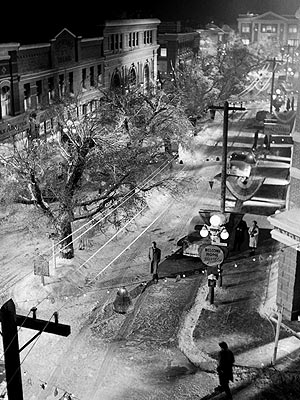
Tara Todras-Whitehill for The New York Times
Egyptian women walk into a polling station. Millions went to the polls to pass judgment on an Islamist-backed constitution, whose passage represented an important milestone in Egypt’s chaotic two-year transition to democracy. More Photos »
CAIRO — - Egyptians approved an Islamist-backed constitution, state news media said Sunday, and the headlines made clear that the political brawl around it set off has only begun.
“The People Sided With Democracy,” the flagship state newspaper Al Ahram declared.
“Wholesale violations,” ran the headline in the largest independent daily Al Masry Al Youm.
Passage of the constitution begins what its supporters call the first experiment in Islamist democracy and its results will be watched across the Arab world. Its approval is a victory for President Mohamed Morsi, of the Muslim Brotherhood’s political arm, who had sought to temporarily suspend the authority of the Egyptian courts in order to stop them from rulings he feared might block the referendum.
But a backlash against Mr. Morsi and his Islamist allies over their authoritarian tactics has now imposed new pressure to rebut charges that they intend to exploit loopholes in the charter to move Egypt toward theocracy.
In a press conference Sunday, opposition leaders called the charter illegitimate and vowed to use any peaceful means available to tear it down. “This is a constitution that lacks the most important prerequisite for a constitution: consensus,” Hamdeen Sabahi, a populist firebrand, declared. “This means we can’t build our future based on this text at all.”
But at the same time Mr. Sabahi and other political leaders said they planned to channel their movement against the charter into campaigns for the upcoming parliamentary elections, suggesting that at least for now to work with the process spelled out by the charter.
Amr Hamzawy, a political scientists and liberal political leader, said the size of the vote against the charter measured the opposition’s growing clout. “We have a majority than isn’t big and a minority that isn’t small. This means there is an evident division in society,” he said, adding, “We feel we’ve made a major achievement.”
About 64 percent of voters in the two-day referendum approved the new charter, Egyptian state media reported Sunday, citing preliminary local results. About 56.5 percent voted yes in last weekend’s first phase, which included Cairo, where a similar majority voted no. And in the more rural precincts that voted on Saturday more than 70 percent voted yes, mapping out Egypt’s cultural divide.
The turnout across both rounds remained low, at just over 30 percent of eligible voters, according to the preliminary figures. A referendum on a plan for the transition after the ouster of Hosni Mubarak drew about 41 percent of eligible voters.
The opposition leaders argued violations of voting procedures had compromised the results and demanded that election authorities rule on the allegations before issuing official results, expected Monday.
But the ballots were cast into transparent boxes and counted on the spot under the supervision of independent monitors, reducing opportunities for fraud. And the margin of the approval, by 4.5 million out of 16.2 million ballots, meant that rigging the results would have required systematic fraud.
International experts said that the constitution itself does not significantly alter the role of religion in Egyptian law. But it raised the stakes for future contests over who will interpret it.t Although the new charter preserves an article from the old constitution declaring the principles of Islamic law a main source of legislation, it adds a new arcticle, #219, broadly defining those principles in accord with established Sunni Muslim scholarship.
Zaid al-Ali (CQ), a researcher at the International Institute for Democracy and Electoral Assistance, an intergovernmental organization, said the constitution’s principle defects were not about religion. The biggest problem, he said, was that the charter protects the Egyptian military from legal and parliamentary oversight, engraving its autonomy in the constitution. Leaders of the Muslim Brotherhood had said privately for months that they were willing to provide the military such constitutional protections in order to ease the handover of power from the generals who assumed control from Mr. Mubarak.
A second problem, Mr. Ali said, was the failure to decentralize decision making. While most of the world has shifted power closer to the local level, he said, the Arab states have resisted out of a historic fear of fragmentation. “Because of the centralization in the Arab region, as soon as you step out of the capital you are in different universe,” Mr. Ali said. “It is an ineffectual way to meet people’s needs and services aren’t delivered.”
Meanwhile, a small group of President Morsi’s Islamist supporters on Sunday continued a sit-in outside the constitutional court, still determined to discourage it from any ruling that might interfere with the referendum before the results are official.
[[[Sectarian animosities continued to surround the vote. The Coptic Church pulled its representatives from the constitutional assembly in a dispute over the role of Islamic law in Egyptian jurisprudence, and before the vote many Christians said it was axiomatic that everyone of their faith would vote against the charter.
On Sunday, opposition leaders charged that in some precincts Islamists had intimidated Christians or blocked their access to the polls. But the allegations could not be confirmed.]]]
-v-











